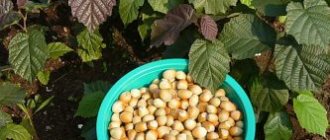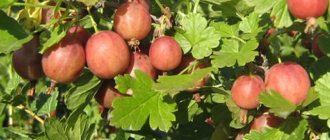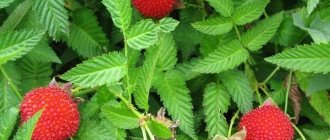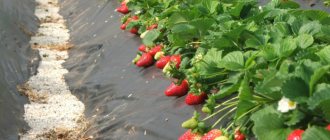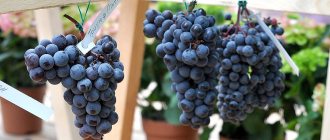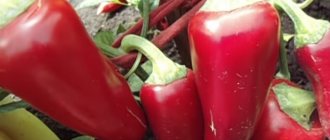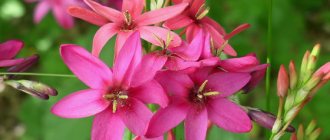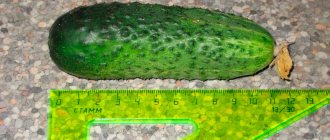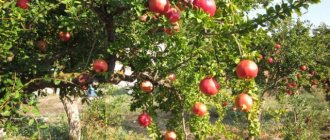Planting hops in open ground is a simple process and has a number of features. How to properly grow one of the most famous plants, hops, from seeds in your summer cottage? Hops serve an excellent decorative function; for example, they can cover an old barn or decorate a fence or veranda. A strong vine with leaves and small cones that have a beautiful appearance is perfect for this. How to plant correctly, what simple care rules need to be followed, what varieties are the most popular, what diseases and parasites can harm the plant? We will analyze all this in the article.
Planting hops: features and description of the plant
The hop plant comes from the Hemp family.
Hops are a powerful vine that has the ability to grow quickly. Only after thirty days its height can reach six to eight meters. The interesting thing is that it wraps around an object or building in a strictly clockwise direction. The plant has an empty stem with four sides; it contains spines bent to one side. They are the ones who help the plant stay on strictly vertical rocks and buildings.
There are a variety of leaves throughout the plant. Three-lobed below, solid above. The leaves have an ideal decorative appearance, so the widespread use of hops can be seen in landscape design.
On the top layer of soil there is an elongated hop root. It has the ability to grow quickly in soil and also sprouts seedlings.
The plant is dioecious, so plants of both sexes are needed for the ovary. The hops, with the inflorescence on which the cones grow, have from twenty to fifty small female flowers. At the bottom of the cones there are glands that produce lupulin. These inflorescences are used to make beer and some medicines.
Hops with an inflorescence on which greenish “panicles” grow, have up to thirty male flowers. Male flowers contain much less lupulin than female flowers.
The flowering process of the plant usually occurs in July, and by the end of summer the fruits - small nuts - ripen. Hops have been growing for thirty years.
Before planting hops in your dacha or suburban area, think carefully. It is very difficult to interrupt the growth of vines; hops have a high level of resistance to various factors and also grow quickly. It is recommended to place a metal layer in the soil around the roots.
October - February: planning and preparation
In winter, hops do not grow, but this time can be used for preparatory work. First you need to find and equip a space for planting hops. Lighting plays a big role. If the hops are not exposed to sunlight for 6-8 hours a day, they will not be able to bloom. Hops can also grow in large outdoor pots; its root system usually does not exceed 4.5 - 6 meters in length. But in a limited space, hops will bear fruit worse than in open ground.
Even in not the most favorable conditions, hop shoots can reach more than 4.5 meters in height. Therefore, it is necessary to prepare special supports for the plant, called trellises. They are usually made from twine or wire. Professional brewers use coir, an organic twine made from coconut fiber. Home brewers can also use it; buying coir in an online store is not difficult. But Johnson warns that before ordering it, you need to study the fauna of your region.
“I stretched the coir on the supports just as the birds were building their nests,” says Annie. “And they began to tear pieces from it to build their nests.”
One of the benefits of coir twine is that it is natural, but this also makes it more attractive to birds and other living creatures. When Johnson started using synthetic twine, she forgot about such problems.
Daniel van Dijk, a bar owner in Louisville, Kentucky, who has been homebrewing for about 12 years, advises all new hop growers to make trellises at least 7.6 meters high.
If you don’t want to use stepladders during harvesting, you should consider horizontal cultivation or consider a pulley system. Plants 6 meters high take up quite a lot of space, but if you organize the space correctly, you can grow hops even in small gardens.
Hop seedlings for planting. Vegetatively.
This is the more common and simpler method. From March to May, the roots and seedlings are separated, then they are planted in pre-prepared planting holes.
This method allows you to propagate a plant using branches; at the moment when you have chosen a branch and it bends towards the soil, pin it and cover it with soil. After some time, you can move the vine to a new location.
How to choose hops for beer?
The choice of hops depends on a whole range of quality characteristics:
- According to organoleptic indicators, hops are medium, coarse and fine.
- Depending on the color, you can choose red, semi-red or green hops.
- According to their purpose, hops are divided into bitter and with increased bitterness, universal and aromatic.
Before purchasing, it is important to determine the amount of raw materials needed. The plant requires specific storage under certain conditions. If it is not possible to store hermetically sealed hops in a cool, dark place, it is better to purchase them in small quantities. It is considered unacceptable to use hops harvested more than 1 year ago in brewing.
Planting hops in open ground: choosing the ideal location
Since direct sunlight severely injures the plant and makes it more vulnerable to various diseases and parasites, it is recommended to plant hops in an area with partial shade. You should choose loamy soil for planting vines. We do not recommend choosing sandy soils, as they inhibit the growth of hops.
The vine needs something to grab onto as it grows, so make a support for it. You should not change the position of the hops for growth, since the natural growth position is vertical, and if horizontal, the growth process is reduced.
Hops create shade with their leaves, so you should think again about where to plant them on your site.
In August, yellow leaves form on the hops and fall off, but only on the half of the plant that is located near the ground. Experienced landscape designers recommend covering this with other shrubs.
August - September: harvesting and home brewing
When the hop leaves become dry, you can begin to harvest. This typically occurs in late August or early September, Johnson said. In order to understand whether it is time to harvest, she brings the leaf to her ear and presses on it. If the sound resembles the “crunch of crepe paper,” it is time to harvest.
If you rush, the cones will give the beer herbaceous, vegetal notes, rather than the desired aromas of essential oils.
“Hops need to be treated with respect,” adds Van Dijk. — You need to harvest the crop only when it is ripe. Plants will not develop according to the schedule you planned.
Typically, harvesting takes a whole day. This is a great opportunity to invite friends who are into home brewing to visit. Not only because you will need help to collect the pine cones, but also in order to immediately start cooking. Even if it's warm outside, you should wear long sleeves.
“If you neglect this advice, you can seriously scratch your hands,” explains Van Dyck.
If you decide to cut the shoots to harvest, cut the stem no lower than 90 cm from the ground. This will make it easier for the plant to develop next year.
Planting hops: caring for hops
You can call hops an unpretentious plant. However, no one has canceled the simple but important rules for caring for the plant. To obtain a beautiful appearance of hops you need:
- Regular and abundant watering, since hops are a moisture-loving plant.
- Feed several times a season.
- Adjustment of vines in the desired direction of growth.
- Timely pruning of stems.
- Timely removal of dead parts of the plant.
Experienced gardeners and summer residents recommend using gloves when working with hop vines, as they have thorns.
Unfortunately, hops are often attacked by aphids and various fungal diseases. Means to combat them can be purchased at a specialized store.
Plant characteristics
Hops are a prominent representative of the Hemp family. There are 3 types of it:
- cordate;
- ordinary;
- Japanese.
This plant has annual and perennial varieties, some of which can grow in one place for up to 20 years. It has a twisted green or light red stem covered with small hairs. Its thickness reaches 15 mm, and its length reaches 10-12 m. It has a powerful root system, the bulk of the roots are located in the top layer of soil.
Flowers are collected in inflorescences of 30-50 pieces and are formed only on female plants. Hop fruits are small brown nuts that ripen from mid-July to September. The seeds are also small and light: 1000 seeds weigh only 3-4 g. The leaves are heart-shaped, and in the middle part of the stem they are much larger. Their upper side is dark green, while the reverse side is much lighter and has glands.
Used in the pharmaceutical, perfumery, cosmetics, baking industries and medicine. It is used for decorating fences, arches, buildings, and creating hedges in the country. The most popular is the ordinary type of hop, since its planting, care and cultivation do not require special rules, it is more attractive in appearance and has a lot of useful properties.
Hop varieties
At the moment, about one hundred varieties of hops are known, but their number is increasing at cosmic speed. Most of these varieties are used as ornamental plants for suburban or summer cottages. The rest are used to make some medicines and beer.
The most famous and favorite varieties of gardeners:
Types of hops for growing in the country
Hops are a perennial climbing plant of the Cannabis family. Its shoots grow very quickly, reaching a height of 7 m. With its help you can create original green curtains, decorate walls and arches.
Two types of hops are grown in the garden: common and Japanese.
Common hop is a winter-hardy, useful plant; beer wort is made from its dried cones. That is why it is often called “beer hops.” A popular variety is Aureus, which has golden-green leaves and yellow drooping buds.
Hops are a dioecious plant with male and female inflorescences. Female flowers are the same cones collected in clusters. And the male flowers are highly branched, pendulous panicles with greenish or white perianth. Female flowers are considered valuable for their content of useful substances; they are used in brewing and medicine. Male plants are not usually grown.
Japanese hops are usually non-winter-hardy annual creeping plants. Outwardly, it is very similar to ordinary hops, but has a more elegant appearance. The difference between them is that ordinary hops climb well over supports, while Japanese hops easily cover vertical walls with a continuous decorative curtain. A popular variety is the Japanese species Variegatus with spotted white-green leaves.
How to decorate your garden beautifully with hops
Hops grow very quickly in the garden, forming a beautiful and thick curtain, so it is used for landscaping fences, gazebos, walls, trees, trellises and pergolas. To create a dense hedge, plant hops 2 meters from the wire fence. Or you can throw it up a tall pole, column or tree.
Arches over gates or gazebos entwined with lush vines of hops look great. It quickly crawls up, clinging with its antennae, creating a shady and secluded place to rest. Japanese hops can be grown in tubs on the terrace and balcony. Or you can stretch the wires and get a luxurious green canopy.
Wildly growing hops are an excellent backdrop for most summer gardeners. Red and yellow flowers look spectacular next to the yellow-green foliage of hops. Fantastic compositions can be created by planting it in company with other climbing plants. Japanese hops will be an excellent neighbor to red and white climbing roses.
How to plant hops in the garden
In bright sun, hops grow especially thickly, but it is better to shade the roots. It also does well in partial shade. The soil is preferably clayey, rich in humus. Apply compost or manure before planting.
- Choose a suitable location where the hops can grow up on a strong support.
- Make a hole approximately 60 cm in diameter and 30 cm deep. Mix the dug soil with compost.
- Remove the seedling from the container and place it in the hole. The earth ball with roots should be level with the ground.
- Fill the voids in the hole with improved soil. Set up a watering circle and water well.
Easy hop care
Hops will not cause you much trouble:
- In summer, apply complex fertilizers or manure at intervals of 2 months.
- Do not overdo it - excessive feeding reduces disease resistance.
- If a gray-white coating appears on the underside of the leaves, and yellowish-brown spots appear on the top, the plant is affected by powdery mildew. Remove infected leaves and treat with fungicide.
- Help the hops weave around arches and fences by directing the shoots horizontally, wrapping them around the wire.
- Annual Japanese hops die off in the fall and can be removed. But in ordinary hops, only above-ground shoots die. They need to be pruned, they grow back in the spring.
- Common hops can be propagated in early spring and autumn by cutting off some of the rooted rhizomes.

